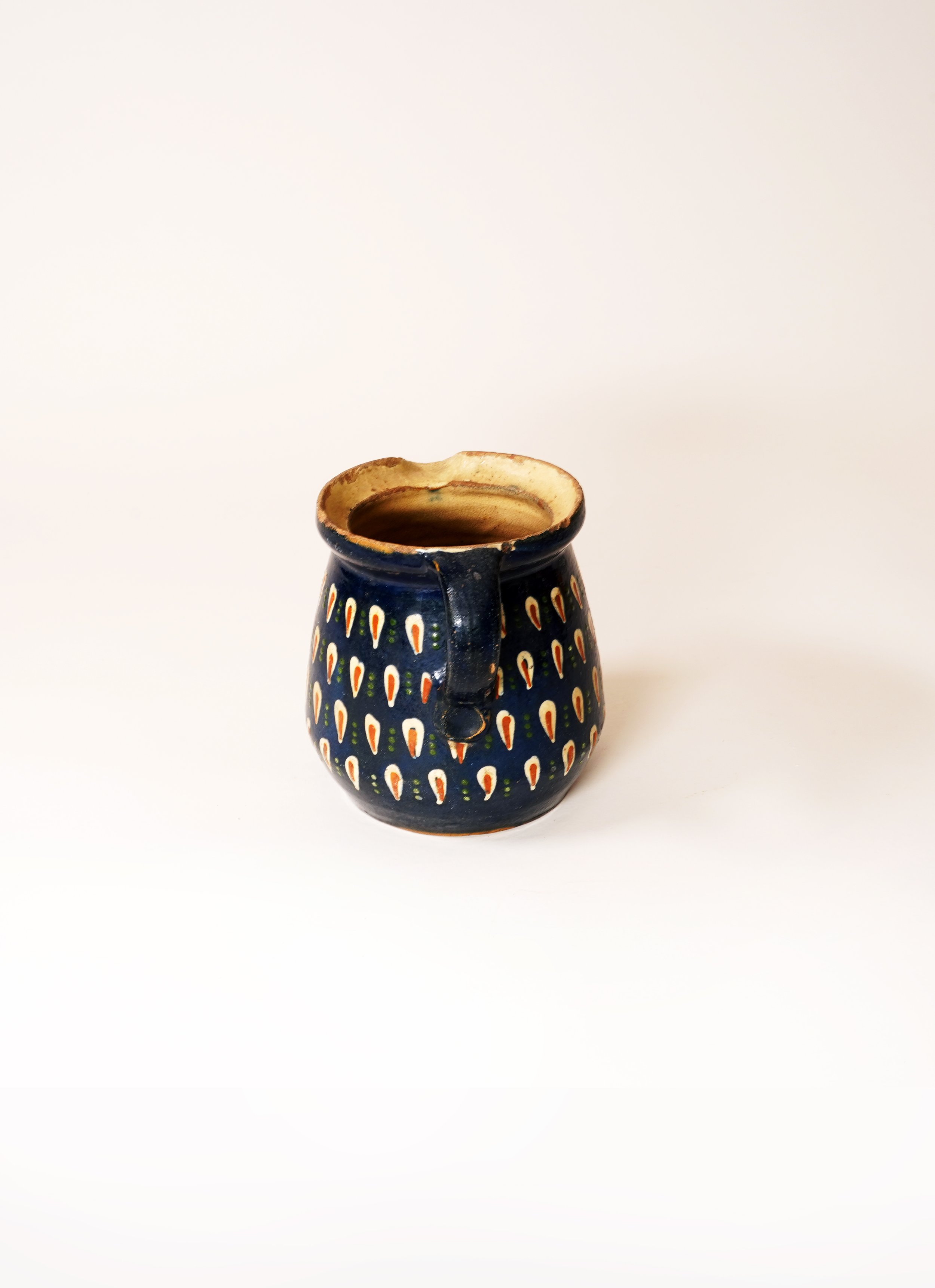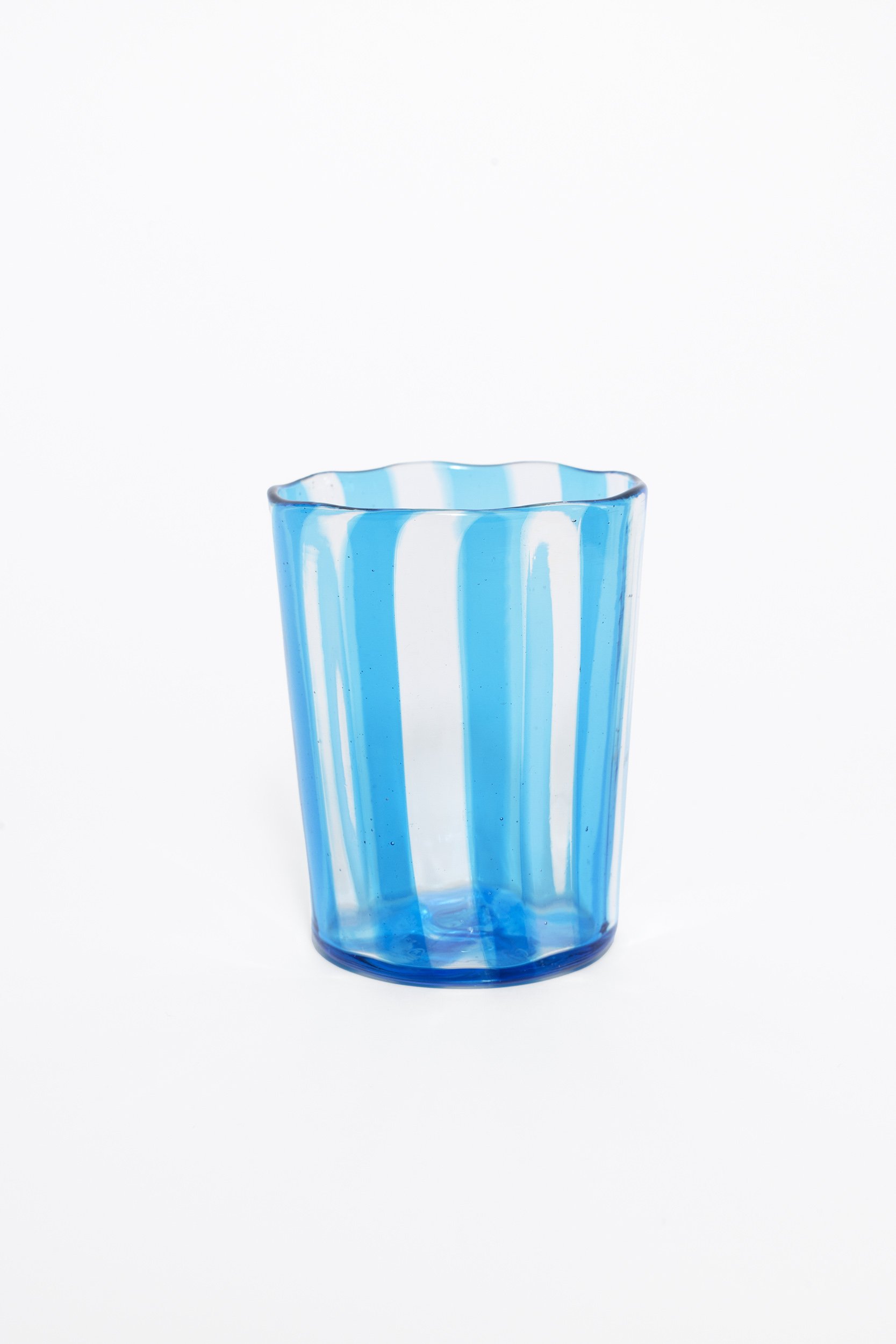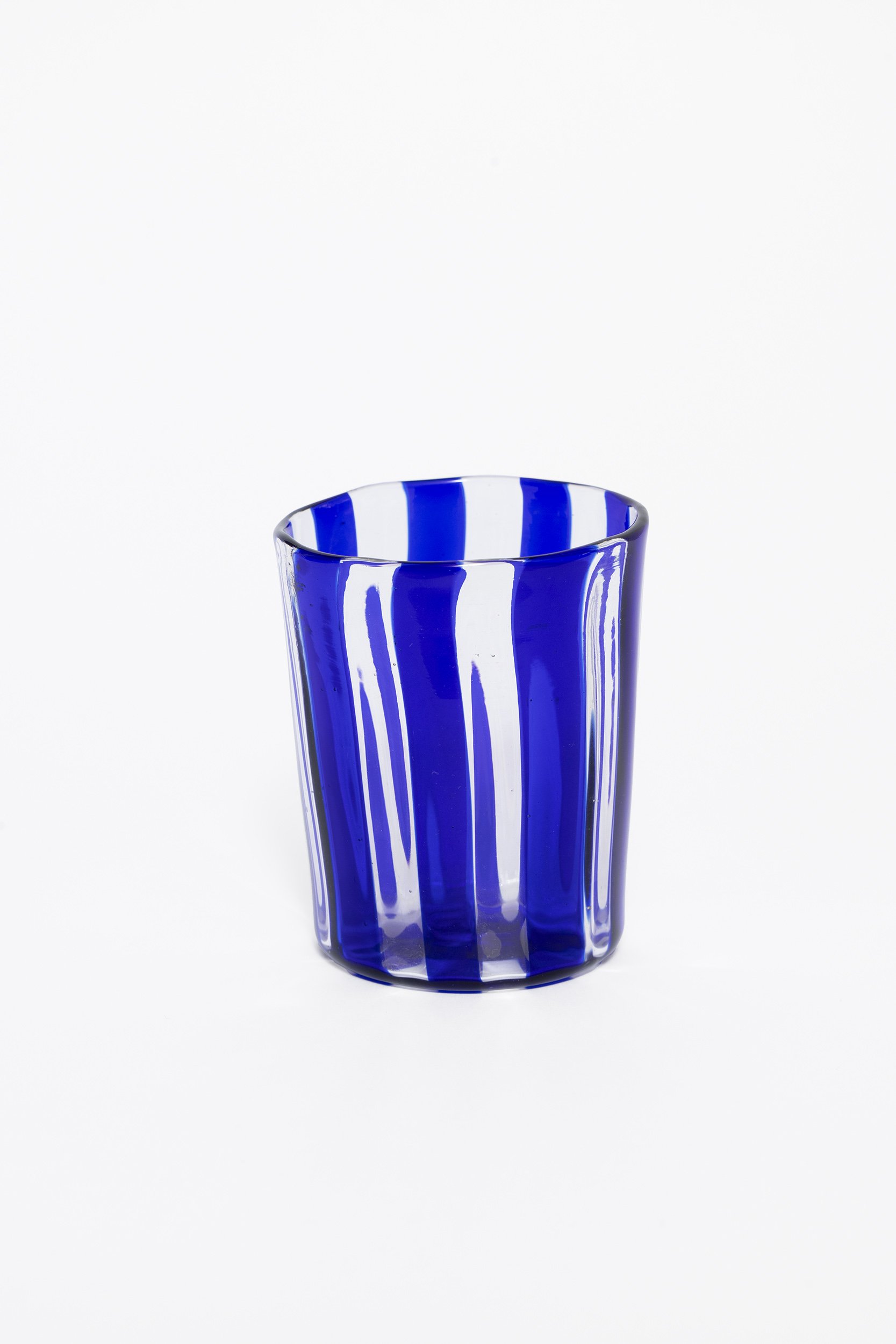 Image 1 of 3
Image 1 of 3

 Image 2 of 3
Image 2 of 3

 Image 3 of 3
Image 3 of 3




Soufflenheim - Large Water Jug (Blue) - ca. 1900
Large Soufflenheim Water Jug, handmade and handpainted, ca. 1900
15 H x 17cm D
Condition: antique, with visible traces of use on surface and glazing, no cracks.
Soufflenheim is a small Alsatian village near Strasbourg, bordering the Hagenau forest, a region rich in clay deposits, where the production of ceramics has been uninterrupted for several millennia.
Dating back to the 12th century the local workshops have continued to produce their unique Soufflenheim ceramics, which was made to be used directly on the fire. The exceptional Soufflenheim clay is difficult to quarry but highly sought after for its exceptional refractoriness. It’s known for the yellowish colour after firing and its slight irregularities on the surface. Fired at over 1000° C and moulded according to a precisely defined manual process.
Until today the pottery in the Soufflenheim workshops is made from that clay, hand-worked and hand-painted. With their ‘Bleu de Soufflenheim’, ‘Bleu Pinceau’ and ‘Rouge’ colours, the tureens for Baeckeoffe, the moulds for Gugelhupf and the other dishes, they continue to produce the traditional shapes still used in regional cuisine.
Large Soufflenheim Water Jug, handmade and handpainted, ca. 1900
15 H x 17cm D
Condition: antique, with visible traces of use on surface and glazing, no cracks.
Soufflenheim is a small Alsatian village near Strasbourg, bordering the Hagenau forest, a region rich in clay deposits, where the production of ceramics has been uninterrupted for several millennia.
Dating back to the 12th century the local workshops have continued to produce their unique Soufflenheim ceramics, which was made to be used directly on the fire. The exceptional Soufflenheim clay is difficult to quarry but highly sought after for its exceptional refractoriness. It’s known for the yellowish colour after firing and its slight irregularities on the surface. Fired at over 1000° C and moulded according to a precisely defined manual process.
Until today the pottery in the Soufflenheim workshops is made from that clay, hand-worked and hand-painted. With their ‘Bleu de Soufflenheim’, ‘Bleu Pinceau’ and ‘Rouge’ colours, the tureens for Baeckeoffe, the moulds for Gugelhupf and the other dishes, they continue to produce the traditional shapes still used in regional cuisine.
Large Soufflenheim Water Jug, handmade and handpainted, ca. 1900
15 H x 17cm D
Condition: antique, with visible traces of use on surface and glazing, no cracks.
Soufflenheim is a small Alsatian village near Strasbourg, bordering the Hagenau forest, a region rich in clay deposits, where the production of ceramics has been uninterrupted for several millennia.
Dating back to the 12th century the local workshops have continued to produce their unique Soufflenheim ceramics, which was made to be used directly on the fire. The exceptional Soufflenheim clay is difficult to quarry but highly sought after for its exceptional refractoriness. It’s known for the yellowish colour after firing and its slight irregularities on the surface. Fired at over 1000° C and moulded according to a precisely defined manual process.
Until today the pottery in the Soufflenheim workshops is made from that clay, hand-worked and hand-painted. With their ‘Bleu de Soufflenheim’, ‘Bleu Pinceau’ and ‘Rouge’ colours, the tureens for Baeckeoffe, the moulds for Gugelhupf and the other dishes, they continue to produce the traditional shapes still used in regional cuisine.






